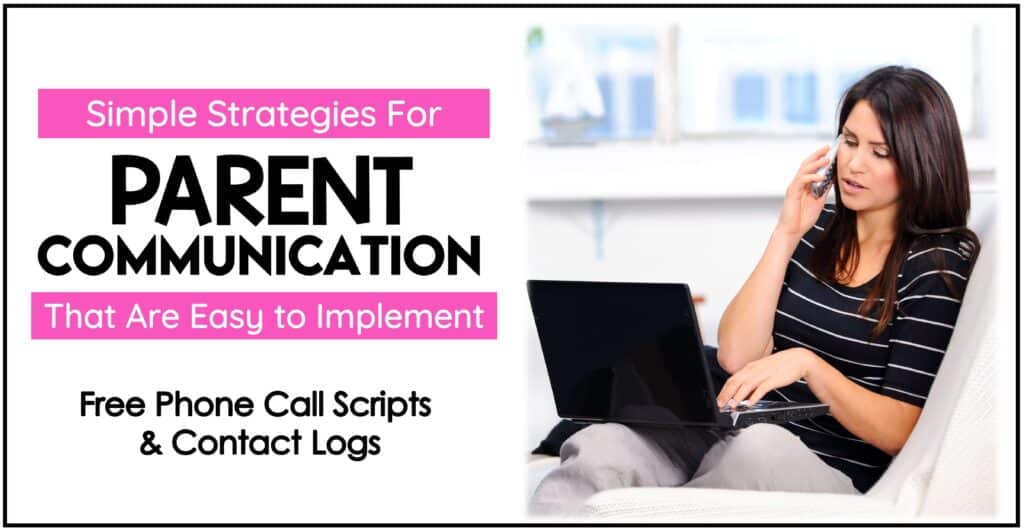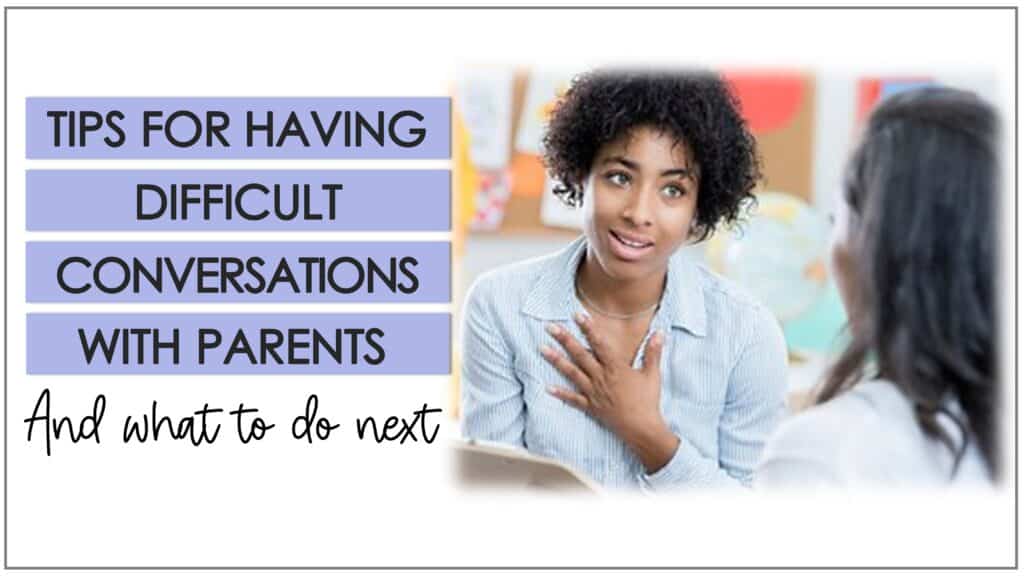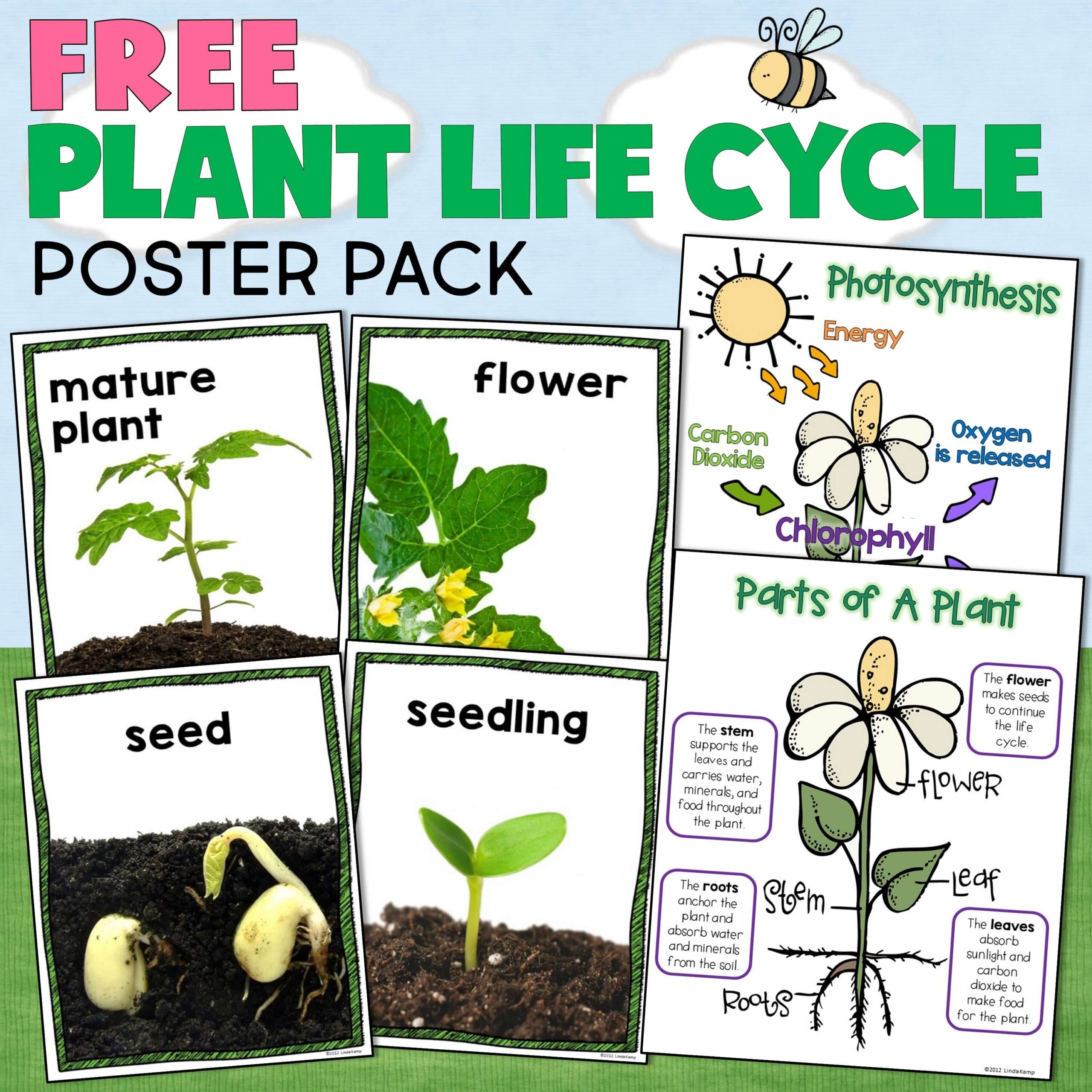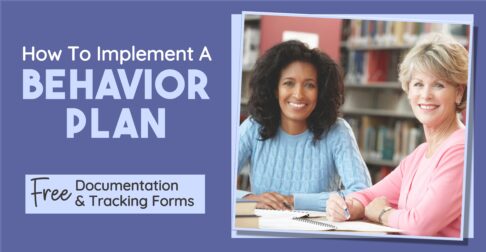Effective and consistent communication between parents and teachers plays a crucial role in a student’s academic success. As educators, it’s essential to establish strong lines of communication with parents to foster a supportive learning environment.
I know how intimidating this can be in your first year. I hate to say it, but my whole first year I rarely ever reached out to my parents with concerns. Sharing the positives was easy but I was intimidated when it came to sharing my concerns.

I now fully understand this was a disservice to the students, the families, and of course myself (a bit of help would have gone a LONG way).
In this blog post, we will explore some simple yet effective parent-teacher communication strategies that you can implement this year. Additionally, we will introduce you to helpful parent communication apps and tools that can streamline the process and enhance collaboration between parents and teachers.
Let’s dive in…
Simple Parent-Teacher Communication Strategies That Are Easy to Implement
- Start right away-Use a mixture of the following strategies starting at the beginning of the year to let your parents know that you are a team in their child’s education.
- Give families your contact information-Make sure your families are aware of your preferred methods of communication, but also make your boundaries clear: At meet the teacher night (or the first day of school), send home a first-day newsletter complete with your preferred communication method + instructions on how to use it. But, also include your communication boundaries. It’s okay to not call parents or respond to emails after the school day is over. Include your office hours in any contact infor or written communications and set up an out of office message for email replies outside of those hours.
- Set up communication tailored for different families
Consider whether your parents or caregivers have access to reliable internet or a smartphone. Does the student have a home or family situation that prohibits them from being included in whole-class or publicly accessible communication? (Think foster care, protection situations, custody issues, or other legal situations)
- Communicate the positives-Do not wait until you have concerns or you are “at your wits-end” to call them. Did you notice Josef being a great friend today? What about Tasha getting an 87% on the spelling test that she studied so hard for? Call (or dojo, email, send a happy note home) to let the families know! It’ll always leave you feeling great as well!
- Keep a parent-teacher communication log-This can be SO helpful in tracking your phone calls/conversations. It’s great to be able to document the positive messages as well as the negatives. A parent-teacher communication log also helps to ensure that no one is falling in between the cracks. Additionally, you can use it to take notes to help you remember what the conversations were about/any concerns or celebrations the parents had.
- Send regular newsletters-Sending out regular newsletters to parents is a fantastic way to keep them informed about classroom activities, upcoming events, and important updates. You can include highlights of student achievements, curriculum updates, and even tips for parents to support their child’s learning at home.
- Hold parent-teacher conferences-Schedule regular parent-teacher conferences to provide an opportunity for in-depth discussions about the student’s progress. These conferences allow you to address any concerns, set goals collaboratively, and celebrate the student’s achievements. Encourage parents to come prepared with questions or topics they would like to discuss. Face-to-face conversations are almost always more effective than phone calls, emails, or dojos.
- Use digital communication platforms-Utilize digital platforms such as email, class websites, or learning management systems to share important information, assignments, and deadlines. These platforms allow for easy and convenient communication between parents and teachers, enabling them to stay connected and engaged. Just make sure all your parents know how to use them!
- Give students happy notes-Happy notes are an easy way to boost the mood of your students + share the good news at home. Download free happy note printables!
Helpful Parent-Teacher Communication Apps to Try
We live in a wonderful age where there are SO MANY digital tools that make our lives easier. Teachers are BUSY and there isn’t always time to hop on the phone or schedule in-person conferences, but these tools make parent-teacher communication much simpler!
ClassDojo: ClassDojo is a popular parent-teacher communication app that allows teachers to share announcements, photos, and messages with parents. It also offers a feature called “Class Story” where teachers can showcase student work and achievements.
Remind: Remind is a user-friendly messaging app that enables teachers to send quick updates, reminders, and announcements to parents. It supports communication via text messages, emails, or in-app notifications.
Bloomz: Bloomz is an all-in-one communication and organization app for teachers. It offers features such as event scheduling, volunteer sign-ups, behavior tracking, and private messaging, facilitating seamless communication between teachers and parents.
Sample Parent-Teacher Communication Scripts
Still nervous about communicating with parents? I promise it will get easier with time. Here are some sample parent-teacher communication templates that will help you get started in improving those parent-teacher relationships.
Sharing a concern template:
“Hello [Parent’s Name],
This is [Teacher’s Name] from [School Name]. I wanted to take a few minutes to discuss your child’s progress in [subject/class]. [Name] has been doing wonderfully in [share progress/positive]. But, I have noticed [area of improvement] and wanted to share my observations with you. [Share observations]. Do you have any tips or suggestions that would help [name] with this in class? I’d love to hear what works best for you at home!
Sharing a positive template:
“Hello [Parent’s Name],
This is [Teacher’s Name] from [School Name]. I just wanted to call and brag about [student’s name] for a minute. Today during [subject], she/he [share positive]. I know [student] has been working so hard at this and I am SO proud of the progress.
Since I have you on the phone, did you have any questions or concerns for me?”
Scheduling an in-person conference (follow up from the previous conversation about said concern):
“Hello [Parent’s Name],
This is [Teacher’s Name] from [School Name]. I’ve been noticing [student] is still having a hard time with [fill in the problem]. I know we talked last week/month about this and you mentioned to try [suggestion]. It doesn’t appear to be working yet. Is there a time that you could come to the school so we can discuss other possible solutions? I’d love to address this as a team so that we can ensure [student] can be as successful as possible. I’m available [share your available times here]. Please let me know what time and day works best for you.”
Parent-teacher Communication Strategies Recap
Effective parent-teacher communication is a vital component of a student’s educational journey. By implementing simple strategies such as regular newsletters, parent-teacher conferences, and utilizing digital communication platforms, you can enhance collaboration and engagement with parents.
Additionally, leveraging helpful parent-teacher communication apps like ClassDojo, Remind, and Bloomz can further streamline communication and keep parents. Trust me, positive parent-teacher relationships WILL make your life easier!

If you’ve found this post helpful please share it with your teacher friends!
Visit these posts for more parent communication tips!
What to Talk About During Parent Conferences

How to Have Difficult Conversations With Parents










Leave a Comment